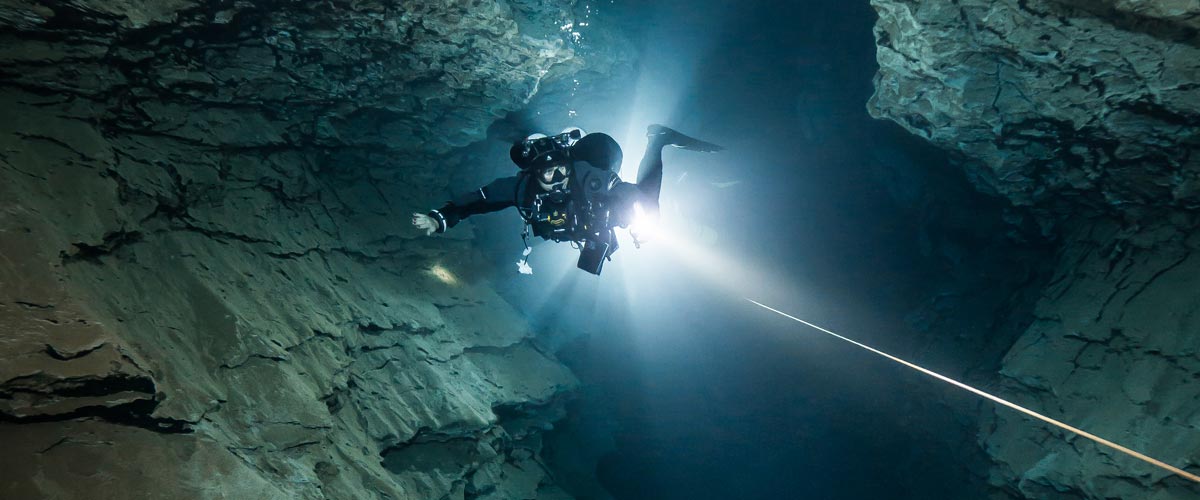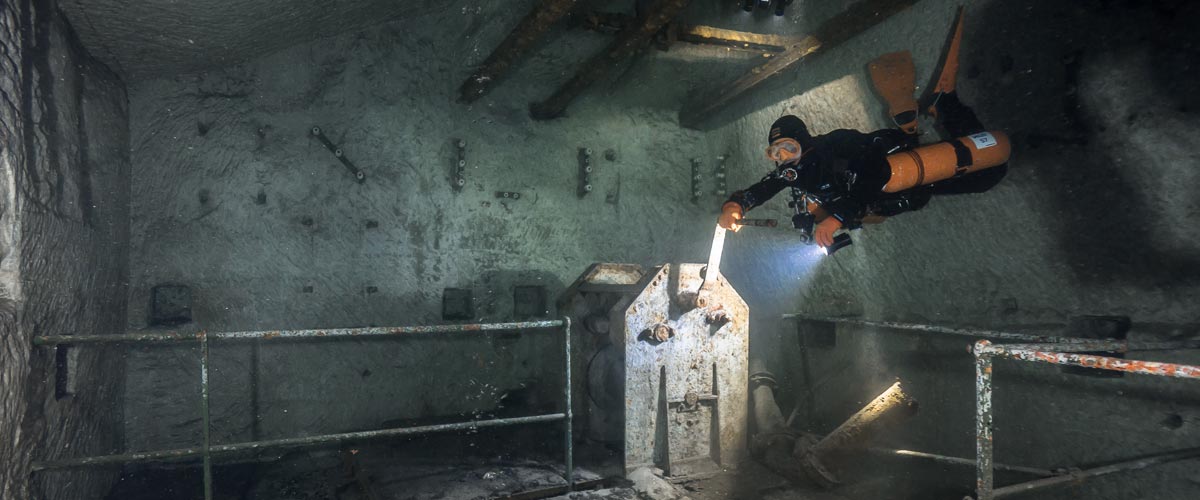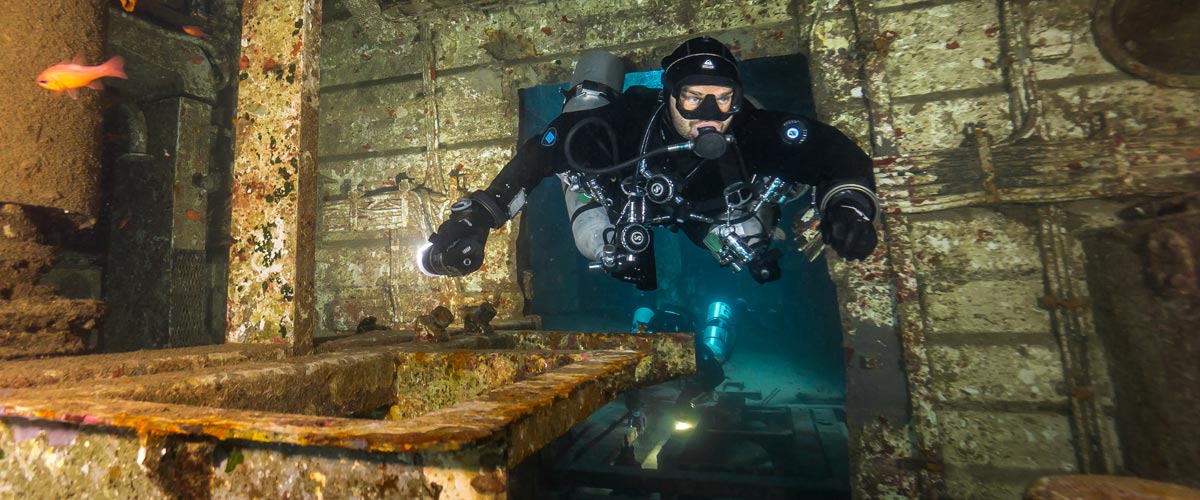Dive Training Blogs
What happens when you take multiple computers and dive tables on the same dive?
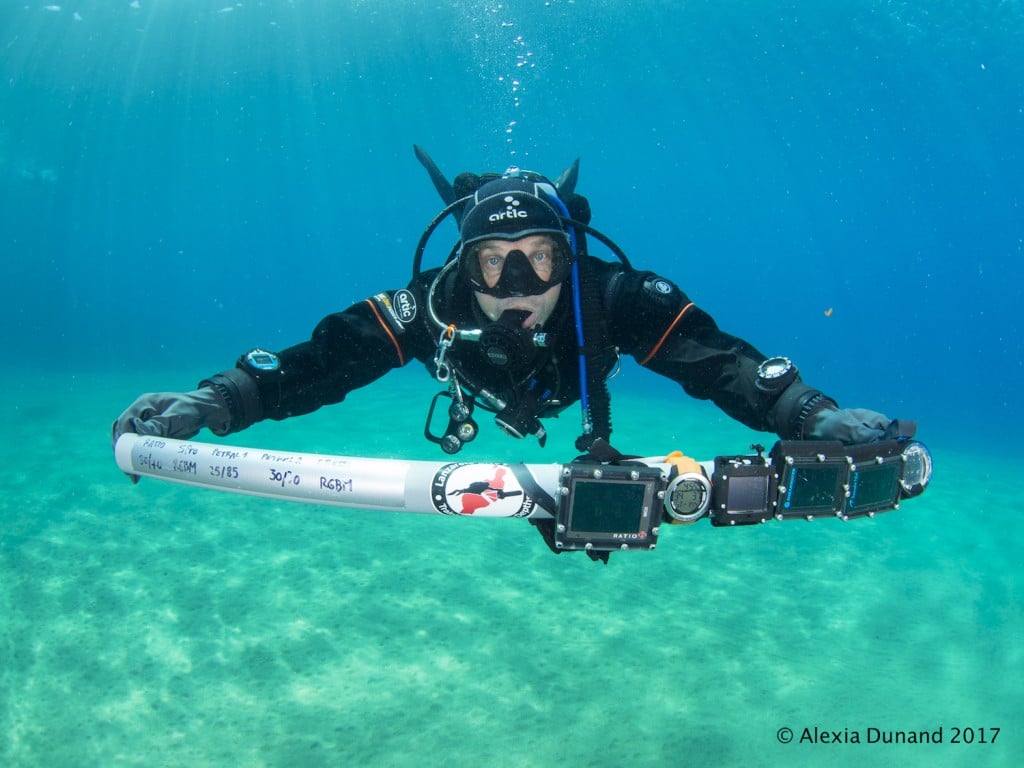
About 5 years ago, I went for a dive with some friends; all of them Instructors on a 40m recreational dive.
The dive ended with all of us separated, some still doing safety stops and some divers already on the surface, whilst one was doing a mandatory decompression stop. Of course, decompression stops are not within the scope of a recreational dive, however, due to the fact that other divers had to make deeper stops, and divers were trying to stay together, this particular dive ended in one big mess.
Aside of the chaos and confusion that occurred underwater, this is obviously not the safest and most fun way to dive. What had happened? Why had it happened?
The divers had been pushing the dive, trying to stay away from deco by following their computers, not realising that the five of us were using different computers, with different settings and algorithms. On that day, I decided to make an example of this and make it a topic that I would highlight on my courses.
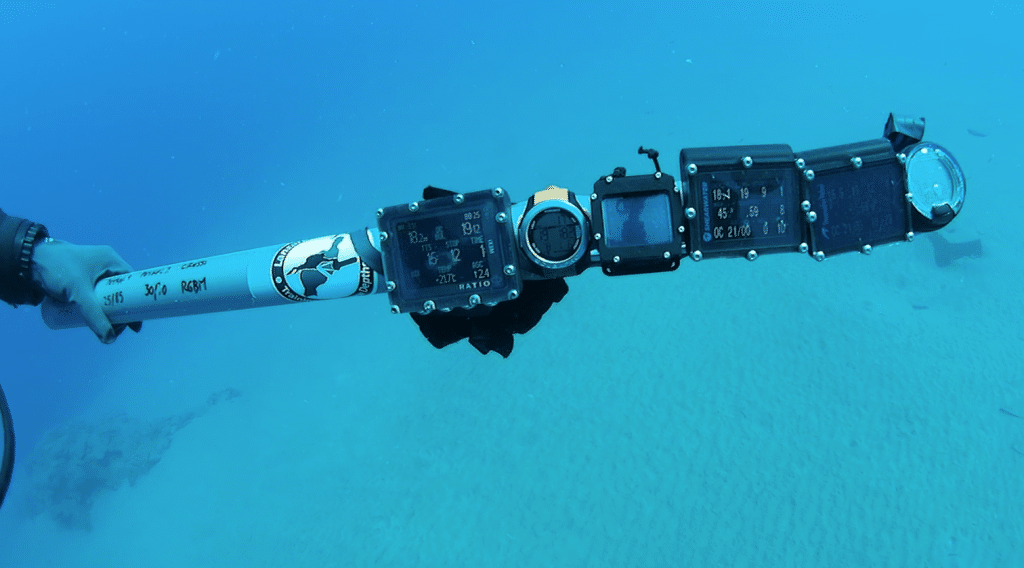
A lot of my time on courses, recreational or technical, is spent on talking and discussing decompression. In the many years that I have been teaching, I discovered that people that were already technically trained had to compromise amongst themselves in order to plan a dive together. The softwares or computers did not agree on what they were about to plan. Between us, with myself as the Instructor, we had to find a compromise.
Some students would show up with plastic dive tables, others with the latest software, and others would still have their old recreational computer with them. Many students, even now, are completely certain that their program or computer is the only and the right way.
During these discussions I normally bring out an old dive US Navy table that I used to carry with me as a backup plan in the early days. Suddenly they realise that things weren’t always like they thought they had been and this was my moment, as an educator, to start a healthy discussion on the ever-changing decompression theory.
I like to compare a 19 year old US Navy diver with a 60 year old Tech diver that smokes. Obviously the diver that is in better shape will be able to off gas more efficiently, not even talking about cold and warm water and demanding environments.
A few years ago, I decided to take several computers on a dive and as I suspected, the differences were astonishing.
Last month, I decided to do the same thing but a bit more seriously, using dive tables, a few of the most common technical computers, and a few recreational computers.My intention was to take them on a 45m, 15 minute dive.
The objective of this experiment, as an educator, is to create awareness of the fact that decompression theory is something that is not written in stone. Computers and tables might produce very different numbers, which given together with the physical differences in between each individual (weight, gender and age), and environment we are diving in, makes it virtually impossible to create a perfect decompression plan.
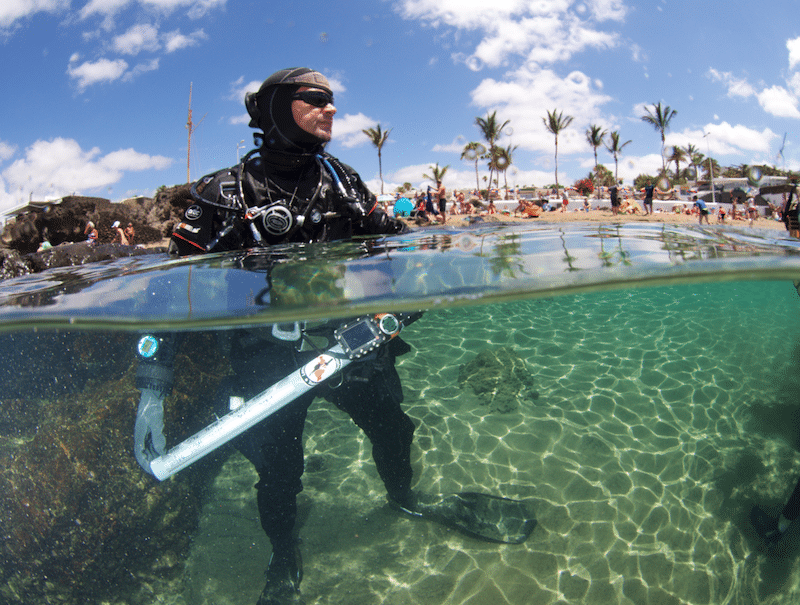
Before the experiment, I made sure there was no surface interval time on the computers by removing batteries. Then I put all of them on a PVC pipe and took them for a dive.
The dive was a 45m, 15 minute bottom time on air, dive with the exact same depth and time for all computers since all these devices were mounted on a PVC pipe.
I expect you will want to know which computer did what but I think it is irrelevant since no one really can tell what the best result is or was. The objective was of the dive was only to create awareness of the fact that all these computers we can buy create different profiles; therefore we need to have a good foundation in order to choose for a certain profile and here, brands are irrelevant.
The experiment was NOT a scientific experiment so I do not want to get into exact numbers, brands or theoretical discussions. The objective was simply to show the audience that different computers give different numbers, very different numbers, and that tables give us different numbers again.
The table I used was a table based on the US Navy tables and still in use by instructors in Northern Europe. Believe it or not, with this table we can plan an air dive to 91m and do a safety stop.
Not one of the computers I used comes close to the profile produced by this table. This table can take us from 91m to 6m whilst any of the computers would have made us stop at least 5-10 times as deep.
I decided not to make any personal conclusions writing this article, however, I think I can safely say that this table is extremely aggressive and should not be used by Sport or Technical divers.
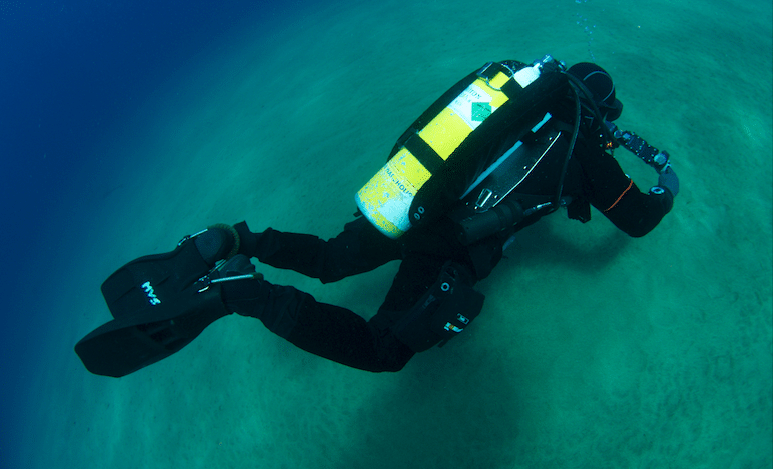
Summary of my findings on the 45m, 15 minute air dive:
- The table produced a 3 minute stop at 3.5m whilst the most conservative computers gave around 10 times that amount of decompression time starting stops 3 times deeper.
- I used two different computers from different brands using the same Buhlmann algorithm and settings using the same Gradient Factors (30/70) and the results were not consistent; not only the total run time was different, also the first stops were at different depths.
- The first stop from brand A was at 9m and brand B wanted to make me stop at 12m.
- Brand A gave me 15 minutes time to surface whilst brand B gave me 23 minutes when we arrived at 18m.
- I also used the same brand computers using different settings: the default setting and another common setting (30/70 and 25/85). The difference on this relatively shallow dive, at 18m was astonishing. At 18m settings 30/70 gave me 23 minutes and 28/85 gave me 11 minutes, implying that a diver needs a very good reason to choose a different setting than the default settings or vice versa.
- The computers that were using RGBM were recreational computers. These gave me shallower stops than the technical computers with less decompression time. An interesting event was a 15m stop from one of them, afterwards directly pushing us to 4.5m.
- Comparing all computers: The first stop of one of the computers was at 15m, whilst the less conservative computer took us to 3.5m in order to finish the deco.
- The most conservative TTS (total time to surface) between all computers was more than double the time of the most aggressive computer and the table really didn’t give us any decompression time.
I don’t want to make any conclusions. I will leave you to draw your own. The objective was to demonstrate that tables and computers give different numbers, numbers that are completely different!
Mike is the founder of www.thelonghose.com and a Technical Instructor Trainer for various agencies and the current Training Director of I.S.E, Innerspace Explorers.
Photos: Alexia Dunand
Blogs
Intro to Tech: What is it about?
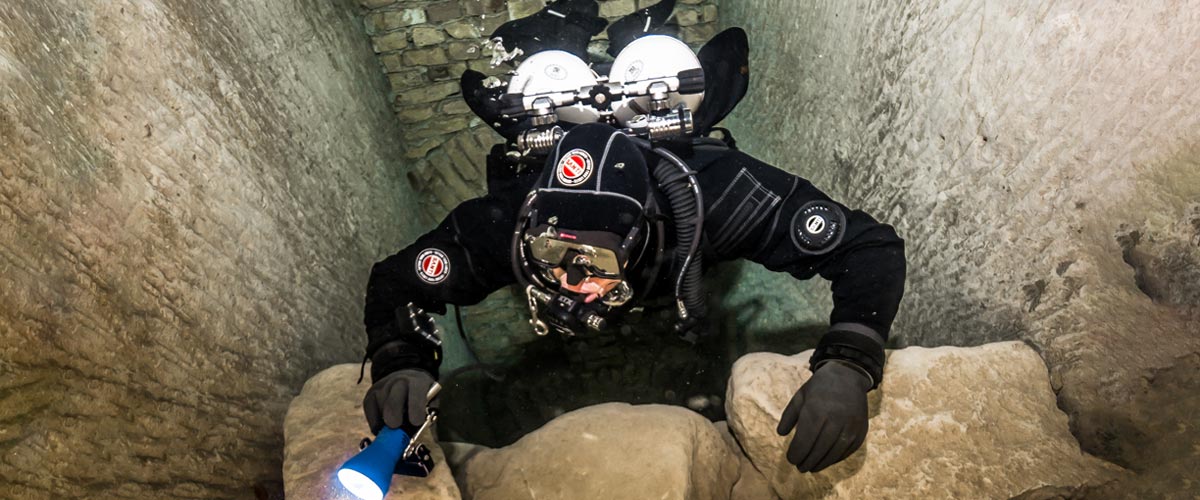
Article by José Pablo Mir
Pictures by Cezary Abramowski
The world of technical diving is exciting. It opens the door to new sites, depths, and bottom times. More importantly, it opens our minds to a new way of planning, facing, and experiencing dives, even those not purely technical.
Becoming a technical diver is a process, and like in other aspects of life, we should find the proper entry point that suits us best based on our knowledge and experience. The Introduction to Technical Diving course from TDI -the world’s largest and most recognized technical diving teaching organization- is the best option for divers who have yet to gain experience in the fundamental aspects of this new practice. The course’s content and its embrace of new techniques and technologies make it possible to acquire a solid foundation to learn and gain experience in this practice properly.
Becoming a technical diver is not something that happens overnight, whether deciding to become one or receiving a certification card stating we are now technical divers. It is a slow process extending farther away than any introductory course. It requires effort and dedication. But it will bring us satisfaction from day one -or two.
It is a matter of mentality
First, we must understand and accept that technical diving, involving greater depths, longer bottom times, exotic gases, virtual or real ceilings, and more, comes with higher levels of risk than the sport diving we have been practicing until now.
Although this discussion usually starts with a warning about risks, as I’ve done in the previous sentence, our practice is not a game of chance.
Technical diving is a rational activity that requires maturity and good judgment, and we will put everything into ensuring that each dive is a successful one -meaning we return from it safe and sound. With this understanding, we will strive to establish a mental attitude more aligned with our practice and its realities.
This new “technical diver” mindset we will develop will lead us to be more cautious in our executions, more analytical in our plans, more rational in our strategies, and more detailed in our procedures.
Experience will keep teaching us to know ourselves better, to keep our anxiety and other emotions under control, and to manage our impulses. Over time, our senses will sharpen, and we will be more attentive to the particulars of the situation we find ourselves in.
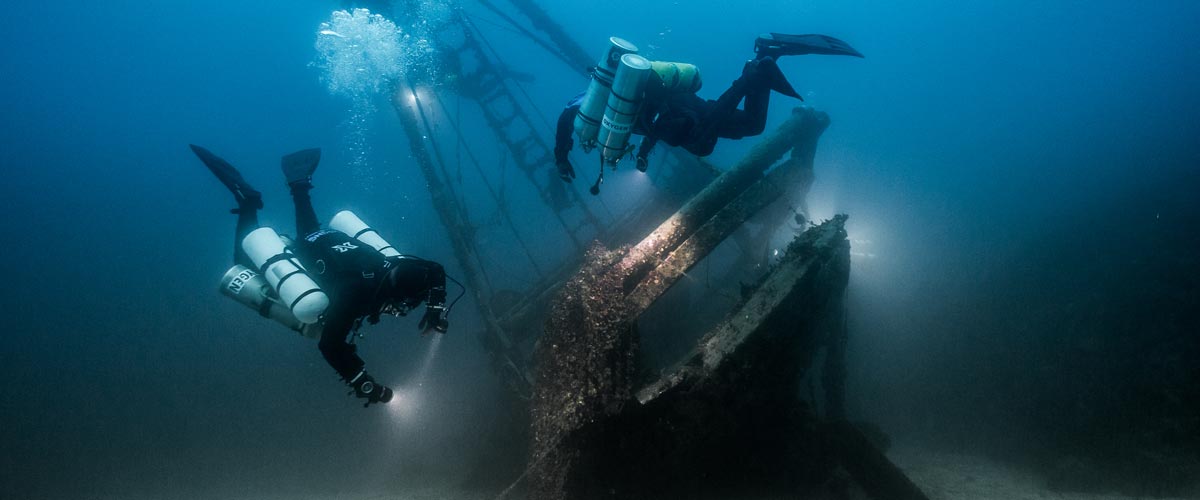
Strategies and procedures
Our strategies, those broad guiding lines tracing the path to follow, from how to approach planning to where, with what, and how we are willing to get there, will be more specific and more practical. Not because they magically become so, but because we will consciously and deliberately frame them that way.
We will establish clear, concise, and realistic procedures. Not only for the undesirable situations that may present themselves but also for those that are part of our dive objectives.
Even though, as technical divers, we often use equipment different from what we were previously accustomed to, it is essential to note that the gear does not make the diver. In a way, we could consider such equipment as the necessary tools to implement what our goal seeks to achieve, according to our strategies and procedures.
Technique plays an important role
We must put our greatest effort into learning and perfecting the different techniques we will be acquiring. Buoyancy, trim, propulsion, cylinder handling, deploying DSMBs and lift bags, valve drills, and more are essential skills we must begin to master to progress in our art. What we cannot do, when we need to do it, can harm us.
Our techniques must be effective and achieve the purpose for which they were devised. But they must also be efficient and require the least resources possible, including the time they take and the effort they demand. Effectiveness and efficiency will prevail over beauty and other considerations that may come to mind, although none of them should be mutually exclusive. A technique executed efficiently and effectively tends to have an inherent beauty.
Refining techniques is a lifelong mission. Some of them will be easy to master from the go; others, on the other hand, will be our life mission and will require many repetitions just to resemble the idea we have in mind of how they should be executed.
We must consider the environment
Our learning, the needs and musts of the practice we engage in, the experience we gradually gain, our strategies and procedures, and even our equipment and tools change with the environment.
Diving in the ocean, everything about us must be suitable for ocean dives. Conditions there rarely emulate those found in a pool, lake, or river. Variable winds and currents, greater depths, visibility conditions, other divers with uncertain skills around us, marine life, maritime traffic, distance from the coast, and many other factors add complexity and uncertainty.
It is never necessary to master the pool on the first day, but planning and aspiring to gradually cope with the ocean’s conditions is essential.
The cost of good training
We are aware that our resources are often scarce in relation to the possibilities of use we could give them if they were not. To a greater or lesser extent, we are part of the economic reality in which we are embedded.
Fortunately, the cost of good technical diver training is not an entry barrier. Comparing training and equipment costs, we see that the former are generally lower. Yes, lower cost for personalized service, essential to our future
performance and safety, than for a series of mass-produced products that are mere, albeit necessary, tools for an end.
The value of good training
The value of the training we received encompasses a range of characteristics, from emotional and methodological to technical and technological. TDI and its Introduction to Technical Diving course offer a deep and modern approach, with a teaching strategy that aims to create thinking divers, not merely obedient ones.
As technical divers, our knowledge is our primary tool. In this type of activity, what we don’t know can harm us.
Is this course optional?
Unfortunately, the fact that this Introduction to Technical Diving course is not a prerequisite for any subsequent training is an invitation to consider it optional. And we all know what usually happens to “optional” under budget constraints.
However, this course should be seen as optional only by those divers who are somehow familiar with the use of technical equipment, who have a mindset more in line with the requirements of this type of diving, who plan and execute the dives the proper “technical” way, who know their gas consumption rate, who are not intimidated by non-decompression tables, who feel comfortable using their dive computers, and know the techniques and have at least an acceptable level of buoyancy, positioning, and propulsion. Those can go straight to a more advanced training course, such as TDI’s Advanced Nitrox.
We must ask ourselves whether or not we are in that group.
Remember our goal: to have fun
Recreational diving is our passion. Jumping into the water carrying heavy equipment and having properly dotted our I’s and crossed our T’s have only one ultimate goal: fun. This is the activity we have chosen as a hobby. We must enjoy it; it must give us pleasure and make us vibrate.
Having a good time is not optional!
Blogs
Four opportunities to go pro in 2024 with Dive Friends Bonaire
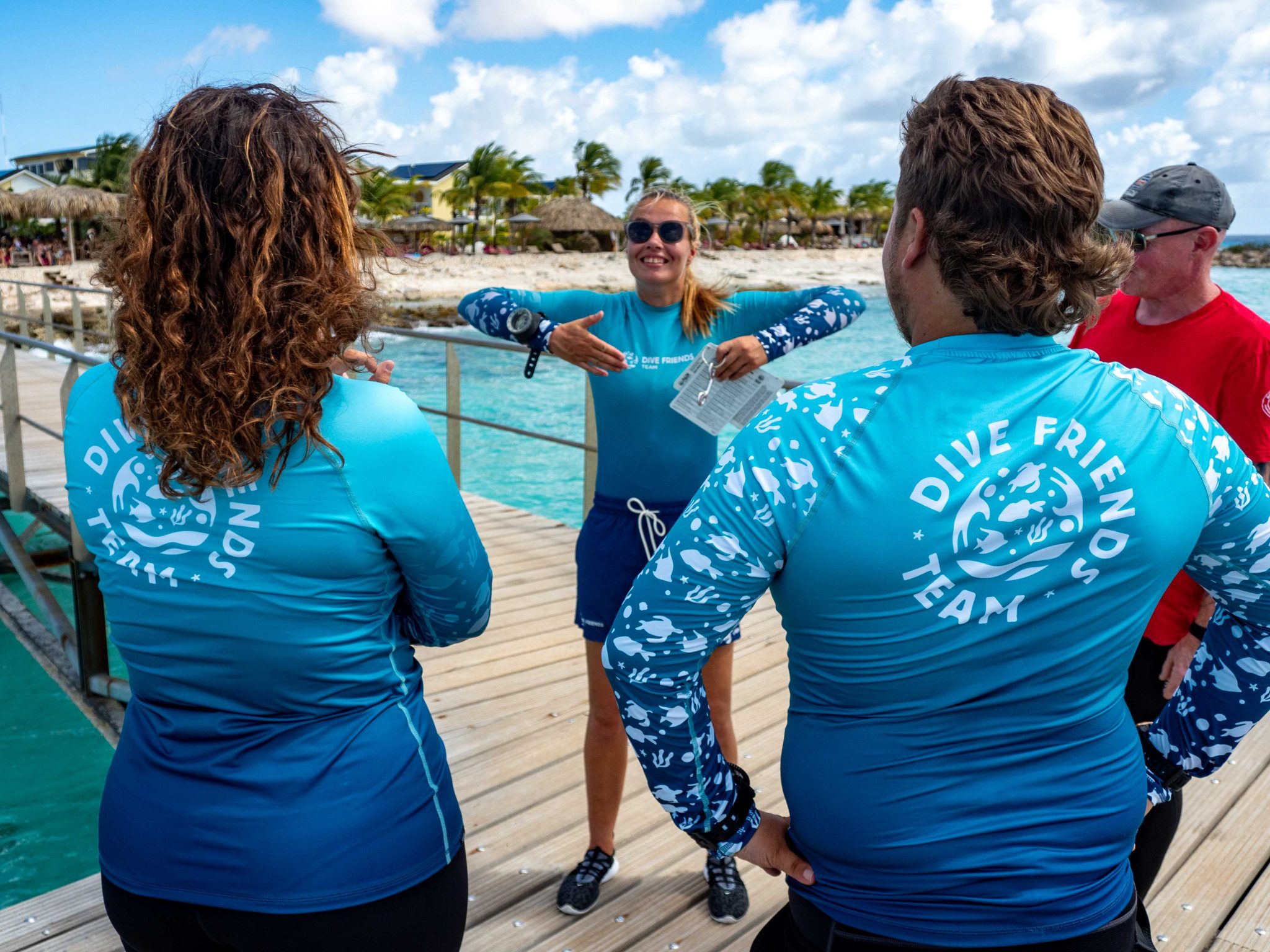
Dive Friends teaches the Instructor Development Course (IDC) several times a year to students who are eager to share their passion for diving with the world.
Dive Friends is known for the personal approach throughout the course. Their in-house course director will lead the students through every essential step, mentoring them to achieve their fullest potential as a dive instructor.
Applications for the following IDC start dates are now open:
- 12 April
- 5 July,
- 20 September
- 29 November
Partnership with Casita Palma
If the student opts for the IDC-Deluxe or IDC-Supreme package, their accommodation will be arranged for them at Casita Palma. This small and quiet resort is within walking distance from Dive Friends Bonaire’s main dive shop location and has everything you need to relax after an intense day of IDC training. Breakfast is included, so the student will always be fuelled and ready for their day.
Contact Dive Friends Bonaire’s Course Director Eddy for more information: coursedirector@divefriendsbonaire.com.
-

 News3 months ago
News3 months agoHone your underwater photography skills with Alphamarine Photography at Red Sea Diving Safari in March
-

 News2 months ago
News2 months agoCapturing Critters in Lembeh Underwater Photography Workshop 2024: Event Roundup
-

 Marine Life & Conservation Blogs2 months ago
Marine Life & Conservation Blogs2 months agoCreature Feature: Swell Sharks
-

 Blogs1 month ago
Blogs1 month agoMurex Resorts: Passport to Paradise!
-

 Gear News3 months ago
Gear News3 months agoBare X-Mission Drysuit: Ideal for Both Technical and Recreational Divers
-

 Blogs2 months ago
Blogs2 months agoDiver Discovering Whale Skeletons Beneath Ice Judged World’s Best Underwater Photograph
-

 Gear Reviews2 months ago
Gear Reviews2 months agoGear Review: Oceanic+ Dive Housing for iPhone
-

 Blogs3 months ago
Blogs3 months agoThe Thrilling Encounter with Tiger Sharks at Beqa Lagoon’s ‘The Colosseum’ with Coral Coast Divers















